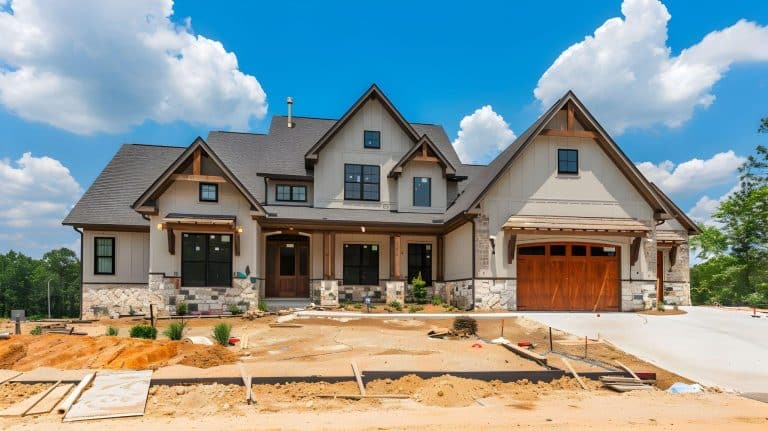Home improvement has changed a lot in the last decade. Materials are better, codes are stricter, and homeowners expect more than a quick facelift. They want spaces that look good, feel good, and hold up under real-life use, real weather, and real families.
That’s where a modern general contractor stops being “the middleman” and becomes the strategist: coordinating trades, protecting structure, and turning loose ideas into a clear, buildable plan that doesn’t fall apart three winters later.
The Role Of A General Contractor In Today’s Home Improvements
A good general contractor is responsible for more than lining up subcontractors. On a well-run job, they are accountable for planning, structure, safety, sequencing, permits, inspections, and long-term performance.
What that often includes:
- Reviewing structural conditions before removing walls or adding loads
- Coordinating carpentry, electrical, plumbing, HVAC, and finishes so no one is working against each other
- Managing moisture control and air sealing at critical transitions
- Interpreting and applying local building codes correctly
- Turning homeowner goals into a detailed scope so pricing, materials, and expectations actually match
When homeowners try to manage “a guy for this and a guy for that,” gaps form between trades. That’s when projects drag, details get missed, and problems show up after the checks are cashed. A strong GC keeps all the moving parts aimed at one outcome: a durable, intentional finish.
Decks: Outdoor Living That Works Long-Term
A deck is more than a platform bolted to the house. Done right, it’s a structural system that ties into drainage, safety, and daily use.
A well-managed deck project should:
- Size and place footings correctly for soil, span, and load
- Attach ledgers or build free-standing structures without inviting water into the house
- Use proper flashing where the deck meets the wall
- Plan stairs, rails, and lighting for real-world use and code compliance
- Match materials (wood, composite, or hybrids) to maintenance expectations
The result is a deck that feels solid, drains properly, and looks like part of the home instead of a temporary add-on.
Bathroom Remodeling: Managing Water The Right Way
Bathrooms fail from the inside out. Leaks, steam, and shortcuts behind tile can quietly damage framing long before surfaces show it.
A detail-focused general contractor will:
- Check framing, plumbing, and vent routing before locking in the layout
- Use proper waterproofing systems in showers and wet zones
- Protect high-risk locations like niches, benches, windows, and tub surrounds
- Ensure exhaust fans and duct runs actually move moisture out of the house
- Choose assemblies that stand up to daily use, not just photo day
A well-built bathroom is a controlled water environment. It should feel clean and solid without hiding slow damage in the walls.
Kitchen Remodeling: Structure, Utilities, And Flow
Kitchens are where structure, utilities, and design collide. Moving a wall or shifting a range is never “just cosmetic.”
A general contractor’s role in a kitchen remodel often includes:
- Identifying load-bearing walls before any demolition
- Planning electrical circuits, lighting, and outlets for today’s appliances and code
- Coordinating plumbing and ventilation so sinks, dishwashers, and hoods land in the right place
- Sequencing cabinets, flooring, counters, and tile so nothing has to be redone
- Protecting clearances, walkways, and workspace so the kitchen works in real life
When the big-picture planning is right, the kitchen feels natural, durable, and functional long after the remodel dust settles.
Finished Basements: Livable Space, Not Hidden Problems
Basements are one of the easiest places to get wrong. Finishing without understanding moisture and building science is an invitation to mold and rot behind brand-new drywall.
A responsible GC will:
- Investigate past water issues, foundation cracks, and humidity patterns
- Address drainage, grading, gutters, or sump systems before finishes go in
- Use wall, floor, and ceiling assemblies that can handle below-grade conditions
- Plan egress, fire safety, and mechanical access for code-compliant living space
- Design lighting and layout so the basement feels like a real extension of the home
The goal is simple: more usable square footage without trading comfort and health for hidden moisture.
Siding And Exteriors: Protection Before Curb Appeal
Siding is not just a color decision. It’s part of the home’s weather protection system, and it only works if what’s underneath is done right.
A solid exterior process usually includes:
- Removing existing layers where needed to inspect sheathing and framing
- Repairing damaged areas instead of burying them
- Installing continuous housewrap as a drainage plane
- Flashing windows, doors, band boards, decks, and roof-to-wall transitions
- Using proper starter strips and maintaining clearances from soil, concrete, and steps
- Choosing vinyl, fiber cement, or engineered wood that fits exposure and maintenance goals
Any siding looks good on day one. The difference shows up after years of wind, rain, and freeze–thaw cycles.
Why A General Contractor Matters Across All Projects
The real benefit of a capable general contractor is that they see how these projects connect.
Examples:
- A deck ledger installed wrong can rot out the band joist behind new siding
- A bathroom fan that terminates into an attic can destroy roof sheathing over time
- A basement finish that ignores grading and gutters will trap future water issues
- A kitchen wall removal without structural planning leads to sagging ceilings
Instead of treating each job as isolated, a strong GC:
- Looks at the whole house, not just one room
- Plans improvements in a smart order to avoid rework
- Pays attention to drainage, ventilation, and structure on every project
- Provides clear written scopes so there’s accountability at each step
In markets like Terre Haute and surrounding areas, a licensed general contractor such as Patriot Property Pros can coordinate decks, bathrooms, siding, basements, and kitchens under one process, so homeowners are not juggling multiple crews and conflicting advice.
Choosing The Right Contractor For Home Improvements
For homeowners, picking the right contractor is more important than picking the trendiest material. Good signs to look for:
- They talk about framing, moisture, ventilation, and flashing details
- They recommend inspection and repair instead of always covering over existing work
- They give step-by-step explanations of their process
- They use detailed written proposals instead of one-line quotes
- They can clearly explain how they handle high-risk areas: showers, roofs, decks, windows, and transitions
When those pieces are in place, projects last longer, feel better, and cost less over time than “cheap” work that has to be fixed later.
A well-chosen general contractor turns scattered upgrades into a durable, long-term plan for the whole home, one that respects structure, climate, and the way people actually live in the space.













